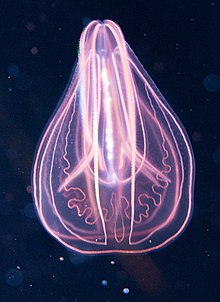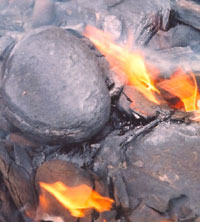User:Abyssal/Portal:Cenozoic
IntroductionThe Cenozoic (/ˌsiːnəˈzoʊ.ɪk, ˌsɛn-/ SEE-nə-ZOH-ik, SEN-ə-; lit. 'new life') is Earth's current geological era, representing the last 66 million years of Earth's history. It is characterized by the dominance of insects, mammals, birds and angiosperms (flowering plants). It is the latest of three geological eras of the Phanerozoic Eon, preceded by the Mesozoic and Paleozoic. The Cenozoic started with the Cretaceous–Paleogene extinction event, when many species, including the non-avian dinosaurs, became extinct in an event attributed by most experts to the impact of a large asteroid or other celestial body, the Chicxulub impactor. The Cenozoic is also known as the Age of Mammals because the terrestrial animals that dominated both hemispheres were mammals – the eutherians (placentals) in the Northern Hemisphere and the metatherians (marsupials, now mainly restricted to Australia and to some extent South America) in the Southern Hemisphere. The extinction of many groups allowed mammals and birds to greatly diversify so that large mammals and birds dominated life on Earth. The continents also moved into their current positions during this era. The climate during the early Cenozoic was warmer than today, particularly during the Paleocene–Eocene Thermal Maximum. However, the Eocene to Oligocene transition and the Quaternary glaciation dried and cooled Earth. (Full article...) Selected article on the Cenozoic world and its legacies Ctenophora (/təˈnɒfərə/ tə-NOF-ər-ə; sg.: ctenophore /ˈtɛnəfɔːr, ˈtiːnə-/ TEN-ə-for, TEE-nə-; from Ancient Greek κτείς (kteis) 'comb' and φέρω (pherō) 'to carry') comprise a phylum of marine invertebrates, commonly known as comb jellies, that inhabit sea waters worldwide. They are notable for the groups of cilia they use for swimming (commonly referred to as "combs"), and they are the largest animals to swim with the help of cilia. Depending on the species, adult ctenophores range from a few millimeters to 1.5 m (5 ft) in size. 186 living species are recognised. Their bodies consist of a mass of jelly, with a layer two cells thick on the outside, and another lining the internal cavity. The phylum has a wide range of body forms, including the egg-shaped cydippids with a pair of retractable tentacles that capture prey, the flat, generally combless platyctenids, and the large-mouthed beroids, which prey on other ctenophores. Almost all ctenophores function as predators, taking prey ranging from microscopic larvae and rotifers to the adults of small crustaceans; the exceptions are juveniles of two species, which live as parasites on the salps on which adults of their species feed. Despite their soft, gelatinous bodies, fossils thought to represent ctenophores appear in Lagerstätten dating as far back as the early Cambrian, about 525 million years ago. The position of the ctenophores in the "tree of life" has long been debated in molecular phylogenetics studies. Biologists proposed that ctenophores constitute the second-earliest branching animal lineage, with sponges being the sister-group to all other multicellular animals (Porifera sister hypothesis). Other biologists contend that ctenophores emerged earlier than sponges (Ctenophora sister hypothesis), which themselves appeared before the split between cnidarians and bilaterians. Pisani et al. reanalyzed the data and suggested that the computer algorithms used for analysis were misled by the presence of specific ctenophore genes that were markedly different from those of other species.[page needed] Follow up analysis by Whelan et al. (2017) yielded further support for the 'Ctenophora sister' hypothesis; the issue remains a matter of taxonomic dispute. Schultz et al. (2023) found irreversible changes in synteny in the sister of the Ctenophora, the Myriazoa, consisting of the rest of the animals. (Full article...) Selected article on the Cenozoic in human science, culture and economicsOil shale is an organic-rich fine-grained sedimentary rock containing kerogen (a solid mixture of organic chemical compounds) from which liquid hydrocarbons can be produced. In addition to kerogen, general composition of oil shales constitutes inorganic substance and bitumens. Based on their deposition environment, oil shales are classified as marine, lacustrine and terrestrial oil shales. Oil shales differ from oil-bearing shales, shale deposits that contain petroleum (tight oil) that is sometimes produced from drilled wells. Examples of oil-bearing shales are the Bakken Formation, Pierre Shale, Niobrara Formation, and Eagle Ford Formation. Accordingly, shale oil produced from oil shale should not be confused with tight oil, which is also frequently called shale oil. A 2016 estimate of global deposits set the total world resources of oil shale equivalent of 6.05 trillion barrels (962 billion cubic metres) of oil in place. Oil shale has gained attention as a potential abundant source of oil. However, the various attempts to develop oil shale deposits have had limited success. Only Estonia and China have well-established oil shale industries, and Brazil, Germany, and Russia utilize oil shale to some extent. Oil shale can be burned directly in furnaces as a low-grade fuel for power generation and district heating or used as a raw material in chemical and construction-materials processing. Heating oil shale to a sufficiently high temperature causes the chemical process of pyrolysis to yield a vapor. Upon cooling the vapor, the liquid unconventional oil, called shale oil, is separated from combustible oil-shale gas. Shale oil is a substitute for conventional crude oil; however, extracting shale oil is costlier than the production of conventional crude oil both financially and in terms of its environmental impact. Oil-shale mining and processing raise a number of environmental concerns, such as land use, waste disposal, water use, waste-water management, greenhouse-gas emissions and air pollution. (Full article...) Selected imagesNeed help?Do you have a question about Abyssal/Portal:Cenozoic that you can't find the answer to? Consider asking it at the Wikipedia reference desk. TopicsGeochronology - Paleogene (Paleocene - Eocene - Oligocene) - Neogene (Miocene - Pliocene) - Quaternary (Pleistocene - Holocene) Cenozoic landmasses - Major Cenozoic events - Paleogene biota appearances - Neogene biota appearances - Quaternary biota appearances - Fossil sites - Stratigraphic units - History - History of paleontology - Timeline of paleontology Researchers - Culture - Treatise on Invertebrate Paleontology - Vertebrate Paleontology Quality ContentFeatured Cenozoic articles - Good Cenozoic articles - History of paleontology - Evolutionary history of life SubcategoriesRelated contentAssociated WikimediaThe following Wikimedia Foundation sister projects provide more on this subject:
|

































